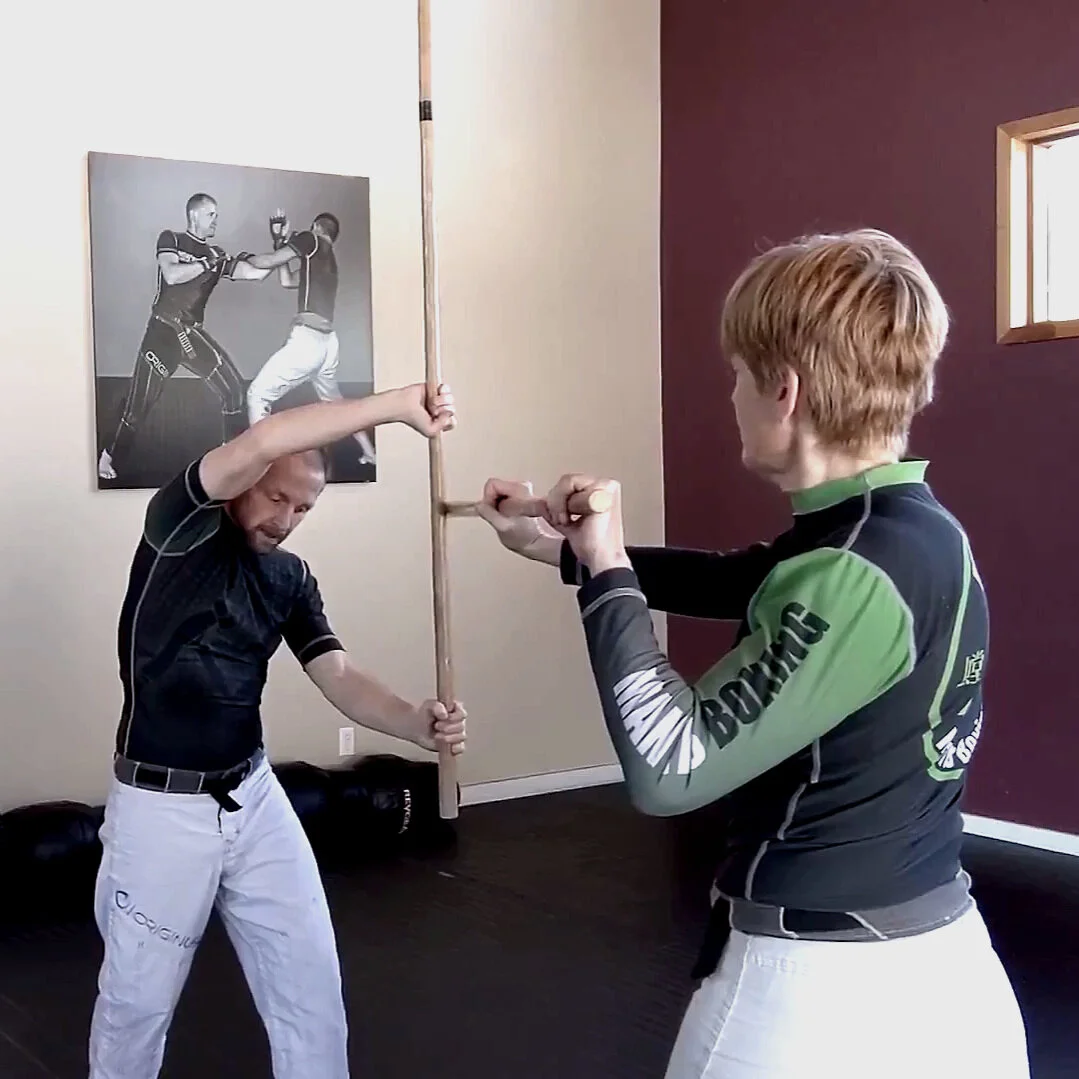Bēng Bù (Crushing Step 崩步) is a prevalent tào lù (form 套路) of tángláng quán. It stands as one of the more popular fighting sets on record for the mantis boxing style, and is a commonality amongst many of the branches of mantis boxing after it split during the turn of the 19th and 20th century.
Although the name translates as 'Crushing Step', this is a bit of a misnomer. Bēng means - ‘to collapse and fall into ruin’. Rather than an actual crushing ‘step’, Bēng Bù is more specifically about the ‘steps to Bēng’. The set is a series of techniques leading to the ‘collapse and fall into ruin’ of our opponent. This can be represented at times with single moves in the form such as crazy ghost fist, but there are many interconnected sequences of techniques as well.
A series of counters to counters, ultimately leading to the enemies collapse. Think about Rule of Three from our 12 boxer principles. While execution and power generation of a bēng dǎ (crushing strike 崩打) is riddled throughout the set, the overarching theme is causing the collapse of our foe in a myriad of ways.
The character Bù (step 步), is defined as a step-by-step process. Or, in this case, using the step (footwork) to generate an ultimate end goal. Bēng Bù in its entirety, contains a myriad of attacks and positions that include - throws, grapples, plucks, kicks, elbow strikes, and more. Bēng however, is the foundation of this tào lù (form 套路).
The ‘engarde’ position known as ‘mantis catches cicada’ shows up in bēng bù right at the beginning. In bēng bù, as well as in other mantis sets, it is branded with the mantis hooks instead of the signature open palms found in other northern boxing sets such as plum boxing (meihuaquan).
At the end of the first road of bēng bù, there is a move often referred to as a ‘tiger tail kick’. There are versions with one instance of this as you start the second road, and others that end the first road with this move, and then repeat it in the opposite direction before heading into road two of the form.
Plum Flower Maiden Dancing from Pole to Pole. Circa 1880. Source: Wikimedia (though I believe that Stanley Henning was the first person to publish this image in his essay for Green and Svinth.)
Thanks to an article done by Ben Judkins on his Kung Fu Tea blog, I found a drawing of this exact same move. The article - “Research Notes: “Background of Meihuaquan’s Development During Ming and Qing Dynasties” By Zhang Guodong and Li Yun” discusses the influence meihuaquan had on the area of Shandong during the late 1800’s. This same ‘tiger tail kick’ move, as seen in the drawing from 1880, is inside the meihuaquan forms.
This plum boxing influence on such a staple form as bēng bù, draws into question any uniqueness of the techniques within, and points to a larger common vernacular of boxing methods found amongst styles in northern China during this time period.
As with many other tanglangquan forms, it is an exciting set to delve into with many great combinations inside.
Crushing Step Lexicon
Road 1
Crazy Ghost Fist
Mantis Catches Cicada
Thrust Palm Closing Attack
Knee Hook Lapel Punch
Leg Hook Lapel Punch
Falling Elbow/Reaping Leg
Rowing Hook
Road 2
Tiger Tail Kick
Double Sealing Hands
Chop with Fist
Deflect Parry Punch
Rowing Hook
Thrust Palm Closing Attack
Knee Hook with Lapel Punch
Step Up to Double Seal
Waist Chop
Wicked Knee
Beatdown Chop
Rising Elbow to Double Seal w/ Wrist Bind
Road 3
Seize Leg
Seize Leg
Closing Door Kick w/ Eye Plunder
Piercing Hook
Point At Star
Change Moon
Lifting Hook with Leg Hook
Catch Kick & Leg Hook
Seize Leg
Road 4
Seize Leg
Seize Leg
Waist Chop
Circle Punch
Rowing Hook
Lapel Punch w/ Trip
Closing








